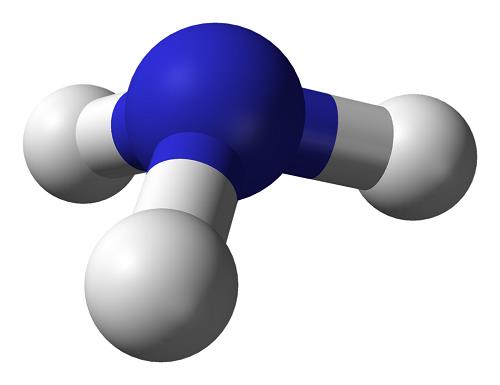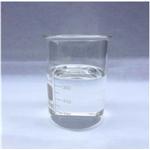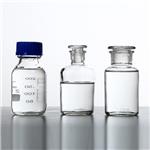Health hazard of Ammonia
Nov 9,2021
Ammonia is a naturally occurring compound which is a key component of the global nitrogen cycle and all living organisms. It is generated in nature primarily by the decay of plant and animal matter and is used as an essential nutrient by all mammals to synthesize nucleic acids and proteins and to maintain acid–base balance. Nitrogen fixation by current industrial processes approximates that produced naturally by biological processes and lightening strikes.

Production
Commercial production of ammonia is primarily via a modified Haber–Bosch process in which atmospheric nitrogen is combined with hydrogen obtained from natural gas under high temperature and pressure conditions, a process termed nitrogen fixation.
Use
About 80% of the commercially produced ammonia is used in fertilizers with the remainder used in a variety of applications such as plastics, synthetic fibers and resins, pharmaceuticals, explosives, refrigeration, and household cleaners.
Environmental Fate
With a vapor pressure of 8611 hPa at 20 °C, ammonia is a gas under normal environmental conditions. In the atmosphere, ammonia is estimated to have a half-life of several days. The primary fate process is the reaction of ammonia with acid air pollutants and removal of the resulting ammonium(NH4+ ) compounds by dry or wet deposition. Rain washout and reaction with photochemically produced hydroxyl radicals also contribute to the atmospheric fate of vapor–phase ammonia. In water, ammonia acting as a weak base (pKa=9.25) will exist in equilibrium with the ammonium ion. Ammonia will volatilize to the atmosphere due to its high vapor pressure in water (2878 hPa at 25°C) while the ammonium ion will be removed via uptake by aquatic plants, adsorption to sediments, and microbial transformation to nitrites(NO2-)and nitrates (NO3-). In soil, the same general processes will occur.As a result, ammonia does not readily leach through soil. However, nitrate can leach through soil due to its high water solubility and if present at a high enough concentration may cause methemoglobinemia in infants. Due to the multiple physical and biological transformation processes that exist in nature, ammonia is not expected to accumulate in the environment or living organisms.
Health hazard
The primary immediate effect of ammonia exposure is burns to the skin, eyes, and respiratory tract. Ammonia dissolves in tissue water and forms ammonium hydroxide that breaks down cellular proteins, saponifies cellmembrane lipids resulting in cell disruption and death, and initiates an inflammatory response that further damages surrounding tissues. Under pathological conditions (e.g., cirrhosis) that impair the metabolic capability of the liver,ammonia can enter the brain, overwhelmthe limited capacity of astrocytes to metabolize ammonia, and result in a potentially fatal disorder called hepatic encephalopathy.
- Related articles
- Related Qustion
- Ammonia synthesis and Ammonia uses Jul 23, 2024
Ammonia gas is easily compressed and forms a clear, colorless liquid under pressure. It is usually shipped as a compressed liquid in steel cylinders.
- What is the conjugate base of NH3?Is it amphotericital? Mar 21, 2024
The conjugate base of NH3 is NH2- which is known as the azide anion.
- What is the connection between Hydrogen peroxide and ammonia? Mar 20, 2024
The synergistic effect of hydrogen peroxide and ammonia strengthened the ammonolysis effect, whereas it weakened the oxidation effect.
3-chloroaniline is a colorless to light amber liquid with a sweet odor. m.p.-11~-9 ℃, b.p.230~231 ℃ (95~96 ℃/1.47 kPa), n20D 1.5940, relative density 1.206, f.p.123 ℃. Insoluble in water, soluble in e....
Nov 9,2021DrugsChloroquine is an aminoquinoline used for the prevention and therapy of malaria. It is also effective in extraintestinal amebiasis and as an antiinflammatory agent for therapy of rheumatoid arthritis....
Nov 10,2021DrugsAmmonia
7664-41-7You may like
- Ammonia
-

- $40.00 / 10Liters
- 2025-09-26
- CAS:7664-41-7
- Min. Order: 10Liters
- Purity: 99.99%
- Supply Ability: 100Tons
- Ammonia
-

- $2.00/ kg
- 2024-12-17
- CAS:7664-41-7
- Min. Order: 10000kg
- Purity: 99%
- Supply Ability: 10000000
- Ammonia
-

- $1.00 / 1KG
- 2019-12-23
- CAS:7664-41-7
- Min. Order: 1g
- Purity: 85.0-99.8%
- Supply Ability: 20ton






